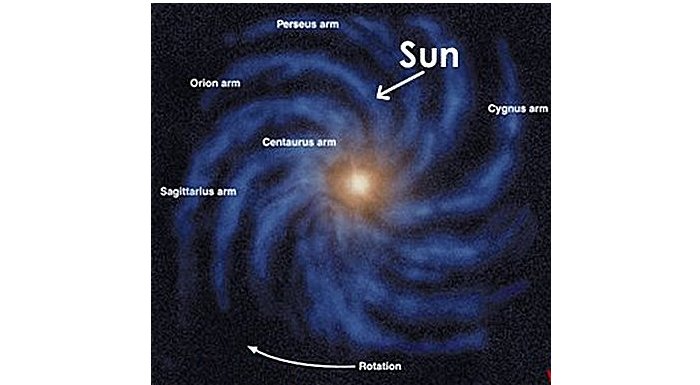Voynich Manuscript: Ancient Book Nobody Is Able To Read
AncientPages.com - The nature and origin of the manuscript have long remained a mystery. Few ancioent manuscripts have caused as much controversy and debate as the mysterious Voynich manuscript. Is it a hoax or a genuine book? It seems the verdict is still out on this puzzling manuscript.
This ancient medieval text is a cryptic document written by an unknown author.
Plenty of skilled cryptographers have studied the document and many attempts have been made to crack the code. Many experts have said it is impossible to decipher the medieval text, but maybe the term “impossible” is over-used by us humans?
Over the years, the Voynich manuscript has caused a lot of controversy and debate. This ancient medieval text is a cryptic document written by an unknown author.
Many skilled cryptographers have studied the document. Their attempts to break the code failed. Up to now, none of them has been able to crack the code.
It is worth mentioning that at the end of WWII the U.S. military passed some spare time encrypting ancient texts. They managed to decipher every text except the Voynich manuscript, which is written with an unknown script system.
Does the Voynich manuscript really contain a message? Are we unable to break the mysterious code? Is the book a deliberate hoax? Is it an encoded version of a known language or a totally invented language?
A new study suggests that the manuscript holds a genuine message.
Researchers say that while the text written on medieval parchment shows basic statistical patterns that bear resemblance to those from real languages, there are features that make the manuscript a hoax. The manuscript was named after Wilfrid M. Voynich, a Polish-American book dealer who found this manuscript in a chest in the Jesuit College at the Villa Mondragone, in Frascati in 1912.
He bought it from the Jesuits, and gave photographic copies to a number of experts to have it deciphered. None of them succeeded. Certain features in the illustrations, such as hairstyles for example, suggested that the book was produced between 1470 and 1500.
But by whom and why?
Inside the manuscript, which is 240 pages long, there was a 17th century letter, written by Johannes Marcus Marci of Cronland, a Bohemian doctor and scientist, rector of the University of Prague, and official physician to the Holy Roman Emperors.
The paper dated 1666, was addressed to Athanasius Kircher, a 17th-century German Jesuit scholar and informed that the manuscript was bought by Emperor Rudolph II in 1586.
During the 1600s, some scholars attempted to decipher the script. Then the mysterious manuscript disappeared for 250 years before Voynich discovered it.
Voynich was also eager to learn more about his new remarkable finding, but establishing the origin of the book and deciphering the code, was a much more complex task than he anticipated.
According to a theoretical physicist, Dr Marcelo Montemurro from the University of Manchester, UK, the "manuscript presents a complex organization in the distribution of words that is compatible with those found in real language sequences.
"We are also able to extract some of the most significant semantic word-networks in the text. These results together with some previously known statistical features of the Voynich manuscript, give support to the presence of a genuine message inside the book."
Dr Montemurro and his team used a computerised statistical method to analyse the text and focused on patterns of how the words were arranged in order to extract meaningful content-bearing words.
"There is substantial evidence that content-bearing words tend to occur in a clustered pattern, where they are required as part of the specific information being written," he explains.
"Over long spans of texts, words leave a statistical signature about their use. When the topic shifts, other words are needed. The semantic networks we obtained clearly show that related words tend to share structure similarities. This also happens to a certain degree in real languages."
Dr Montemurro argues that the hoax hypothesis cannot possibly explain the semantic patterns he has discovered. He believes it unlikely that these features were simply "incorporated" into the text to make a hoax more realistic, as most of the required academic knowledge of these structures did not exist at the time the Voynich manuscript was created.
"While the mystery of origins and meaning of the text still remain to be solved, the accumulated evidence about organization at different levels, limits severely the scope of the hoax hypothesis and suggests the presence of a genuine linguistic structure," scientists say in their paper.
Those who believe in the authenticity of the Voynich manuscript maintain that the script is far too complex to be a hoax. Skeptics on the other hand, suggest that the failure of the code breaking indicates there might be no code to decipher and no hidden message.
There is also a possibility that the manuscript is not a code, but rather an unidentified language and of course, as usual it is very convenient to dismiss certain uncomfortable findings as hoaxes simply because we do not understand their origin and meaning.
Copyright © AncientPages.com All rights reserved. This material may not be published, broadcast, rewritten or redistributed in whole or part without the express written permission of AncientPages.com
Expand for referencesReferences:
More From Ancient Pages
-
 On This Day In History: British Forces Captured Gibraltar – On August 3, 1704
News | Aug 3, 2016
On This Day In History: British Forces Captured Gibraltar – On August 3, 1704
News | Aug 3, 2016 -
 Forbidden Underwater Discovery Could Re-Write Ancient History But The Investigation Was Stopped
Ancient Mysteries | Aug 27, 2019
Forbidden Underwater Discovery Could Re-Write Ancient History But The Investigation Was Stopped
Ancient Mysteries | Aug 27, 2019 -
 Ancient People In Tasmania Witnessed Stunning Auroras When The Earth’s Magnetic Field Flipped
News | Feb 19, 2021
Ancient People In Tasmania Witnessed Stunning Auroras When The Earth’s Magnetic Field Flipped
News | Feb 19, 2021 -
 Neanderthals And Homo Sapiens Invented Different Fire Techniques – Evolution Of Human Cognition
Archaeology | Jun 1, 2023
Neanderthals And Homo Sapiens Invented Different Fire Techniques – Evolution Of Human Cognition
Archaeology | Jun 1, 2023 -
 Horses In Florida Did Not Travel Far Distances – New Study Suggests
Archaeology | Jan 3, 2019
Horses In Florida Did Not Travel Far Distances – New Study Suggests
Archaeology | Jan 3, 2019 -
 Oldest Aqueduct Dated To 3rd Century BC Discovered In Rome
Archaeology | Apr 4, 2017
Oldest Aqueduct Dated To 3rd Century BC Discovered In Rome
Archaeology | Apr 4, 2017 -
 Genes For Learning And Memory Are 650 Million Years Old – Study Shows
Evolution | Jul 19, 2023
Genes For Learning And Memory Are 650 Million Years Old – Study Shows
Evolution | Jul 19, 2023 -
 Mysterious Shemsu Hor – Followers Of Horus Were Semi-Divine Kings And Keepers Of Sacred Knowledge In Predynastic Egypt
Ancient Mysteries | May 15, 2017
Mysterious Shemsu Hor – Followers Of Horus Were Semi-Divine Kings And Keepers Of Sacred Knowledge In Predynastic Egypt
Ancient Mysteries | May 15, 2017 -
 Puzzling McClelland Sherd – Undeciphered Inscription Could Be Early Bronze Age Writing
Artifacts | Mar 27, 2018
Puzzling McClelland Sherd – Undeciphered Inscription Could Be Early Bronze Age Writing
Artifacts | Mar 27, 2018 -
 Ancient DNA Reveals Missing Link In The History Of Indo-European Languages
Linguistic Discoveries | Feb 5, 2025
Ancient DNA Reveals Missing Link In The History Of Indo-European Languages
Linguistic Discoveries | Feb 5, 2025 -
 Giant Bath Tub Built For Tsar Alexander I – Why Was It So Large?
Featured Stories | Jul 11, 2018
Giant Bath Tub Built For Tsar Alexander I – Why Was It So Large?
Featured Stories | Jul 11, 2018 -
 Home Of The Gods – Arrival Of Golden Ships – Part 1
Ancient Mysteries | Jun 12, 2018
Home Of The Gods – Arrival Of Golden Ships – Part 1
Ancient Mysteries | Jun 12, 2018 -
 1,200-Year-Old Viking Sword Found By Hiker In Norway
Archaeology | Oct 22, 2015
1,200-Year-Old Viking Sword Found By Hiker In Norway
Archaeology | Oct 22, 2015 -
 Prehistoric Rock Art Discovered Near Kadiri, Andhra Pradesh, India
Archaeology | Dec 5, 2015
Prehistoric Rock Art Discovered Near Kadiri, Andhra Pradesh, India
Archaeology | Dec 5, 2015 -
 Sparta And Legendary King Leonidas: The Heroes Of Thermopylae
Featured Stories | Jul 18, 2018
Sparta And Legendary King Leonidas: The Heroes Of Thermopylae
Featured Stories | Jul 18, 2018 -
 Patasola: Hideous One-Legged Female Vampire Who Kills Driven By Hatred In Colombian Folklore
Featured Stories | Jul 26, 2019
Patasola: Hideous One-Legged Female Vampire Who Kills Driven By Hatred In Colombian Folklore
Featured Stories | Jul 26, 2019 -
 Unexplained Ancient Case Of Missing Time And Mysterious Disappearance Into An Underground World
Featured Stories | Feb 11, 2025
Unexplained Ancient Case Of Missing Time And Mysterious Disappearance Into An Underground World
Featured Stories | Feb 11, 2025 -
 Anthropologists’ Quest To Save An Alamo Cannon
News | Aug 7, 2024
Anthropologists’ Quest To Save An Alamo Cannon
News | Aug 7, 2024 -
 Ancient Egyptian Monuments Threatened By Climate Change Restored By Oriental Institute
News | Mar 9, 2023
Ancient Egyptian Monuments Threatened By Climate Change Restored By Oriental Institute
News | Mar 9, 2023 -
 3,000-Year-Old Shoe Found On A Beach In Kent, UK
Archaeology | Feb 24, 2023
3,000-Year-Old Shoe Found On A Beach In Kent, UK
Archaeology | Feb 24, 2023







